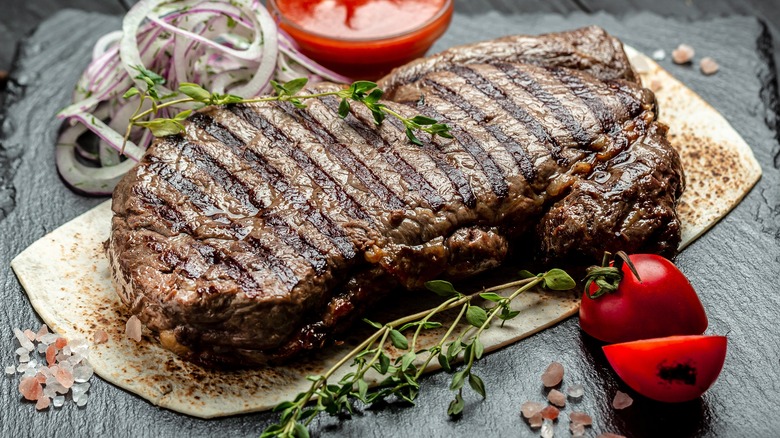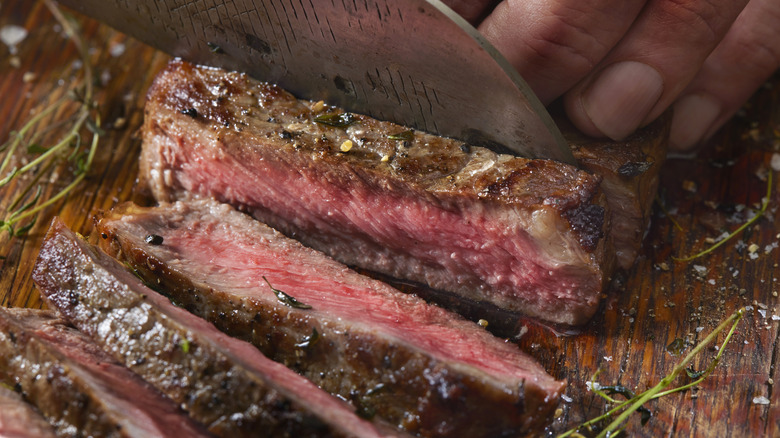When Resting Steak, You Need To Pay Attention To The Temperature
Resting is one of the most important — and most overlooked — aspects in assuring you get a perfectly cooked steak. You may lose a lot of its flavorful juices if you cut into it too soon. Letting your steak rest allows juices to be reabsorbed in the meat, which is great, but that also means you're letting your nice warm steak cool. That's why it's important to track the temperature of your steak, even after it's done cooking. Then, you can let it rest until the right moment when the juices have settled, and then get a nice slice of tender steak that hasn't cooled too much.
Steak loses juiciness as it's cooked because the heating process causes its cells to contract, expelling some of their moisture. However, that contraction is not permanent, and as the steak cools, the cell walls relax and expand a bit again. This relaxation allows some of the expelled juices to be reabsorbed by the cells. The extent to which your steak relaxes increases as the temperature drops, but only to a point. Once the final temperature reaches the level of a rare steak, it has reabsorbed most of its liquid and is in its ideal state.
Resting to the right temperature means a more juicy steak
No matter how well done you like your steak, the target temperature for resting won't change. You'll want to let it cool to between 120 and 125 degrees Fahrenheit before cutting into it because that's the point where the meat will be fully relaxed. This can take longer than you might think, as the temperature of your steak will continue to rise for a few minutes due to the effects of residual heat. A steak's temperature will rise 5 to 10 degrees after you stop cooking, depending on its thickness, and only then will it decrease to the perfect range for slicing, so be patient.
You can track the temperature of your resting steak precisely by using a meat thermometer, but that risks puncturing the meat and releasing juices if you do it too early. For those being extra careful (or if you don't have a thermometer), there are some good general tricks for resting time that will bring your steak to the right temperature. Rest your meat for five minutes for each inch of thickness or for approximately half as long as you cooked it. For most steaks, both methods will land you at around a five-minute rest time for the perfect temperature. Take your meat's temperature as seriously off the heat as you do on it, and you'll perfect the last step for an amazing steak.

